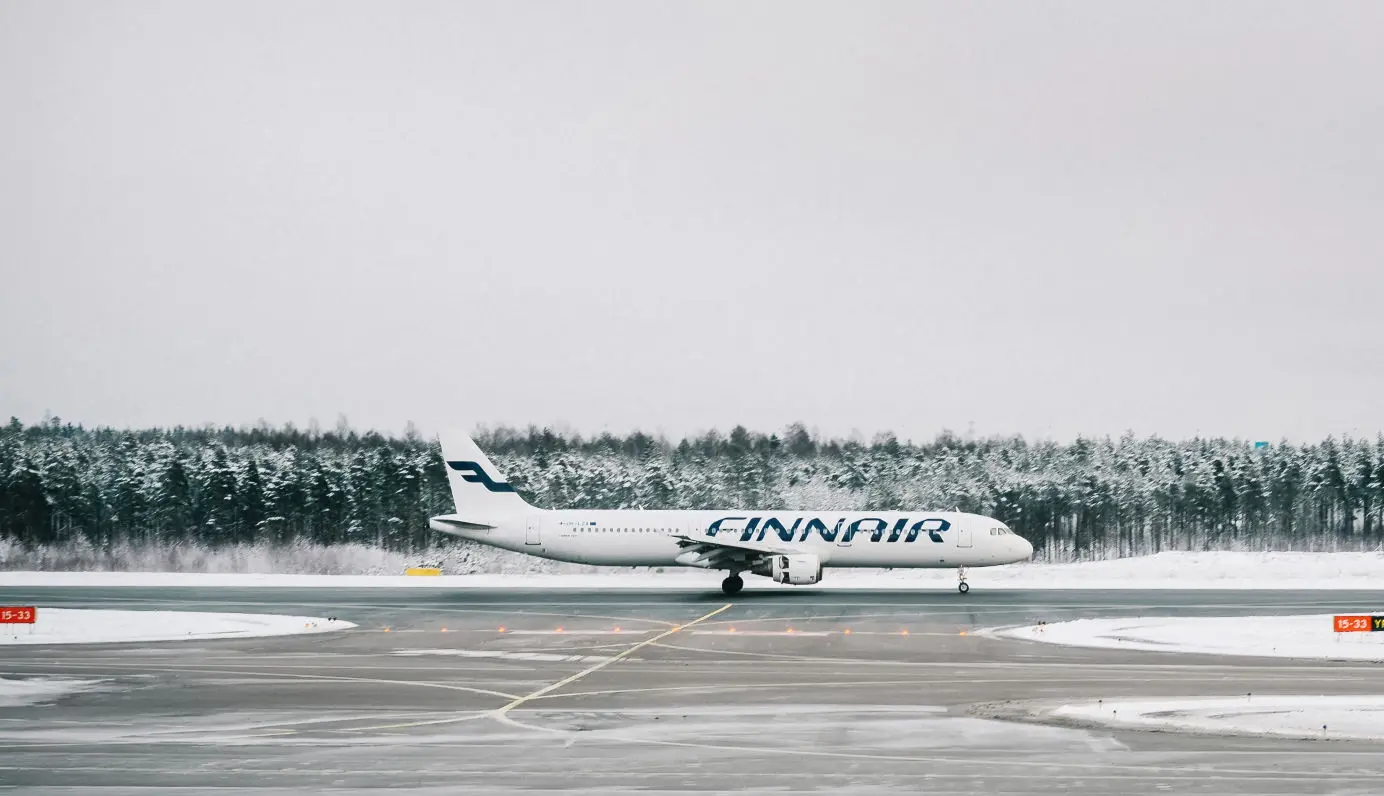
How Many RPM Does a Jet Engine Spin?
Seeing a jet engine running makes it easy to wonder how fast it spins.
Table of Contents
The jet engine is arguably fundamental to modern aviation. Not many people think about it, but jet engines are a vital part of our world and how it works.
Jet engines allowed us to travel faster and farther than older propeller-driven airliners. The more extended range between fuel stops made intercontinental travel more straightforward and quicker. The world became more accessible, and intercontinental travel within one day was now possible for the first time.
Jet airliners also brought social change. Large jet airliners could carry more passengers, and combined with increasing fuel efficiency, fares declined. Now more people from different socioeconomic levels could travel the world.
From a technical perspective, the jet engine is a technological marvel. Whether you are interested in aviation technology or not, most people have seen one and seen it spinning. Sitting in an airliner, watching the jet engines rotate leads to an obvious question:
How many RPM does a jet engine spin?
What Is a Jet Engine and How Does It Work?
When we talk about jet engines, we typically refer to an air-breathing engine powered by a turbine and with internal combustion. They are complex machines and are one of the most expensive parts of an aircraft. The jet engines are typically mounted under the wings on modern airliners, while some older airplanes have them mounted near the tail. Most planes in service today are equipped with two engines, while some larger models have four.
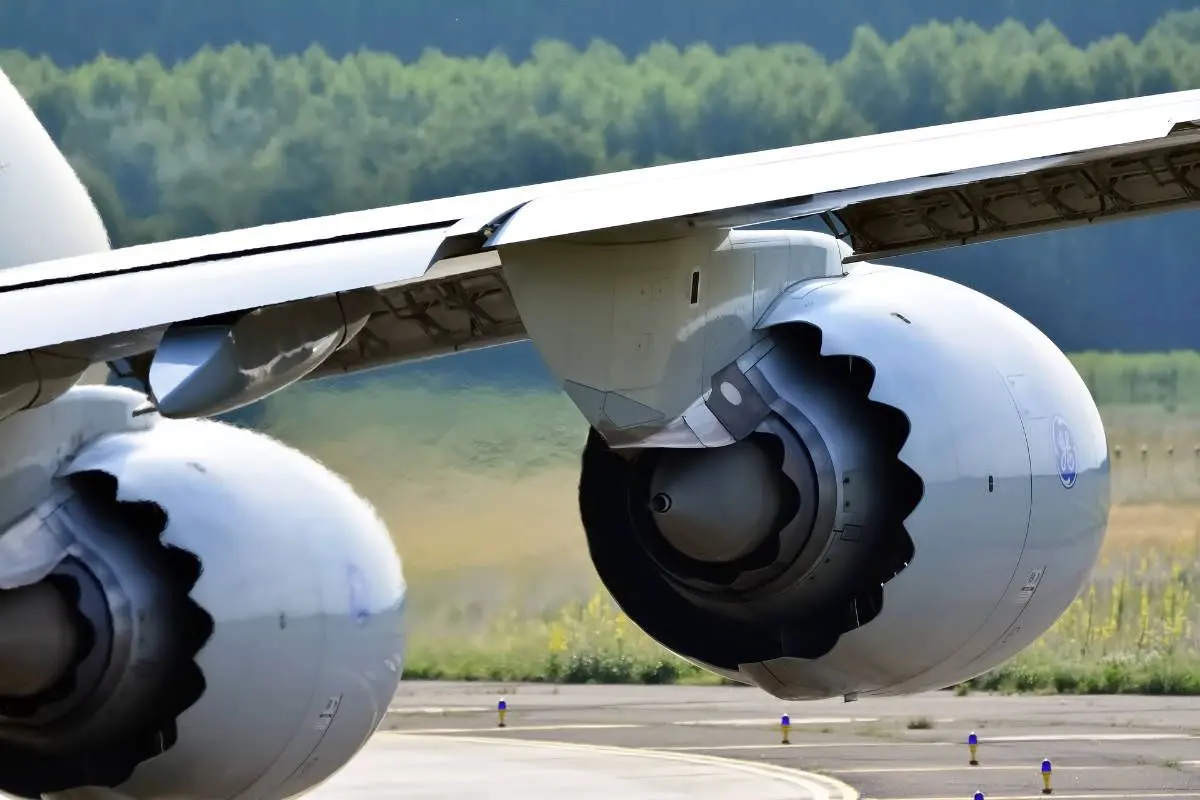
In simple terms, a jet engine works by pulling in atmospheric air, compressing it, mixing it with fuel, and igniting it. The compressed air expands by the heat, and the pressure directs the air rearwards, propelling the aircraft forward.
Early jet engines were relatively weak and ineffective. Over the four decades, between the 1950s and late 1990s, the typical jet airliner engine went from producing 5000 lbf (de Havilland Ghost) of thrust to about 115.000 lbf (General Electric GE90). More recent engines, like the General Electric GE9X powering the Boeing 777X, can produce 134.000 lbf.
Engine reliability also took a turn for the better. Reliability went from 40 in-flight shutdowns per 100.000 flying hours to less than one.
A Short History Lesson
The principles behind the jet engine and jet power are pretty old.
In fact, in ancient times, water- and windmills employed some of the same turbine principles as jet engines. When the Chinese invented gunpowder-powered fireworks in the 13th century, they utilized another jet propulsion principle as hot gasses expand and propel the rocket forward.
Englishman Frank Whittle devised an early version of a jet engine in 1928. He developed his design further in the following years and even patented his designs. However, the government did not show enough interest.
German engineer Hans von Ohain started work on similar designs in 1935. A collaboration with Ernst Heinkel, who saw potential in the idea, culminated in the Heinkel HeS 3 engine - The world's first operational jet engine. Heinkel fitted the HeS 3 into the Heinkel 178 aircraft, becoming the world's first jet aircraft.
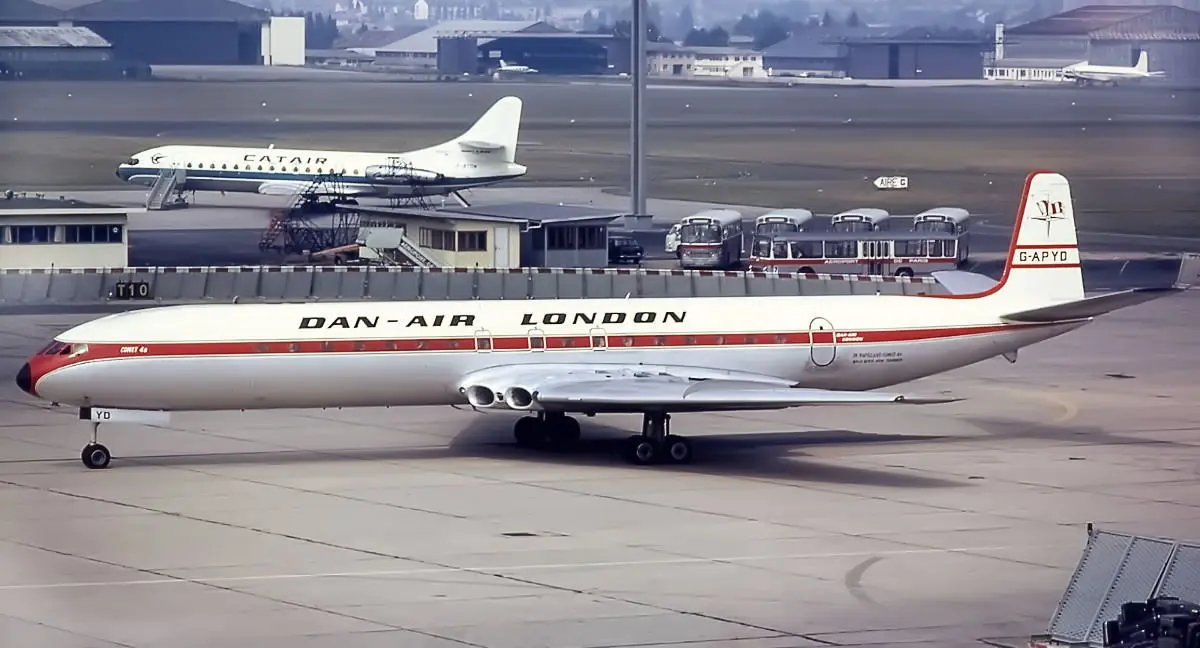
By the 1950s, aircraft manufacturers primarily used jet engines in fighters. However, the military cleared select engine models for early civilian jet airliners-like the de Havilland Comet. Popularity grew in the 1960s, and most large airliners were now jet-powered. In the 1970s, fuel efficiency enhancements were made possible by the invention of the high-bypass turbofan engines—the same type used today on modern jet airliners.
Anatomy of a Jet Engine
Although many types of jet engines exist, the most common on large jet airliners today is the turbofan. It provides excellent fuel efficiency, relatively low noise, and high thrust levels.
A turbofan engine consists of many different parts. In simple terms, a turbofan engine works like this:
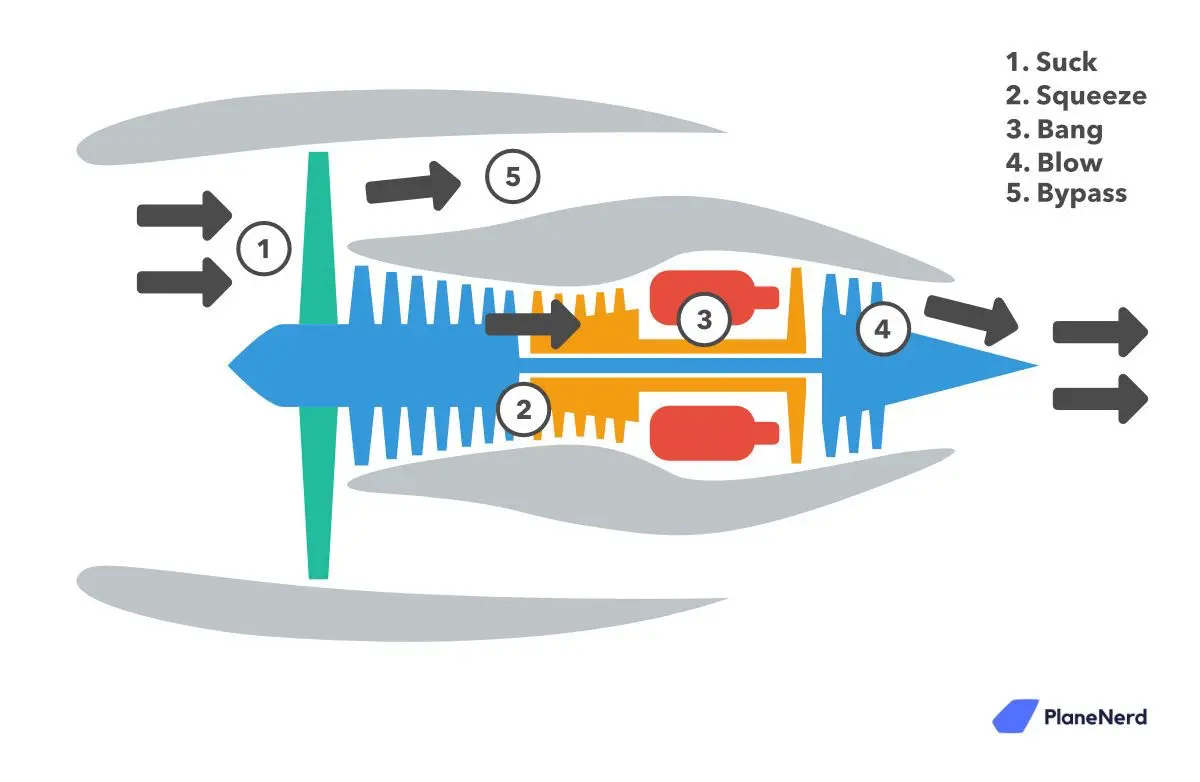
- Suck: The front fan sucks in a large amount of air. A fraction of it goes to the core and the combustion process.
- Squeeze: The air is squeezed together in the compressor stages, increasing the pressure and temperature of the air.
- Bang: Fuel is mixed with the compressed air and ignited in the combustion stage. The ignition causes expansion of the air, and the force is directed rearwards.
- Blow: The hot exhaust from the combustion forces its way through the turbine. This force drives the fan and compressor (from points 1 and 2 above).
- Bypass: The air not directed through combustion bypasses the engine core without further processing. Accelerated by the powerful and fast front fan, this air provides the majority of the engine's thrust, as the fan directs the air rearwards.
Now the question of how many RPM a jet engine spins becomes a little complicated to answer: Because not all engine parts rotate at the same speed. Sometimes not even in the same direction. Turbofan engines have an inner core with higher rotational speeds than the outer. It has something to do with how high the pressure should be in that particular stage. Generally, higher rotation rates mean higher pressure.
How Many RPM Does a Jet Engine Spin?
The speed at which a jet engine spins depends on the type and model.
As we established earlier, there is no single rotation speed in a jet engine. In this case, however, we focus on the most visible and perhaps most characteristic part: The front fan.
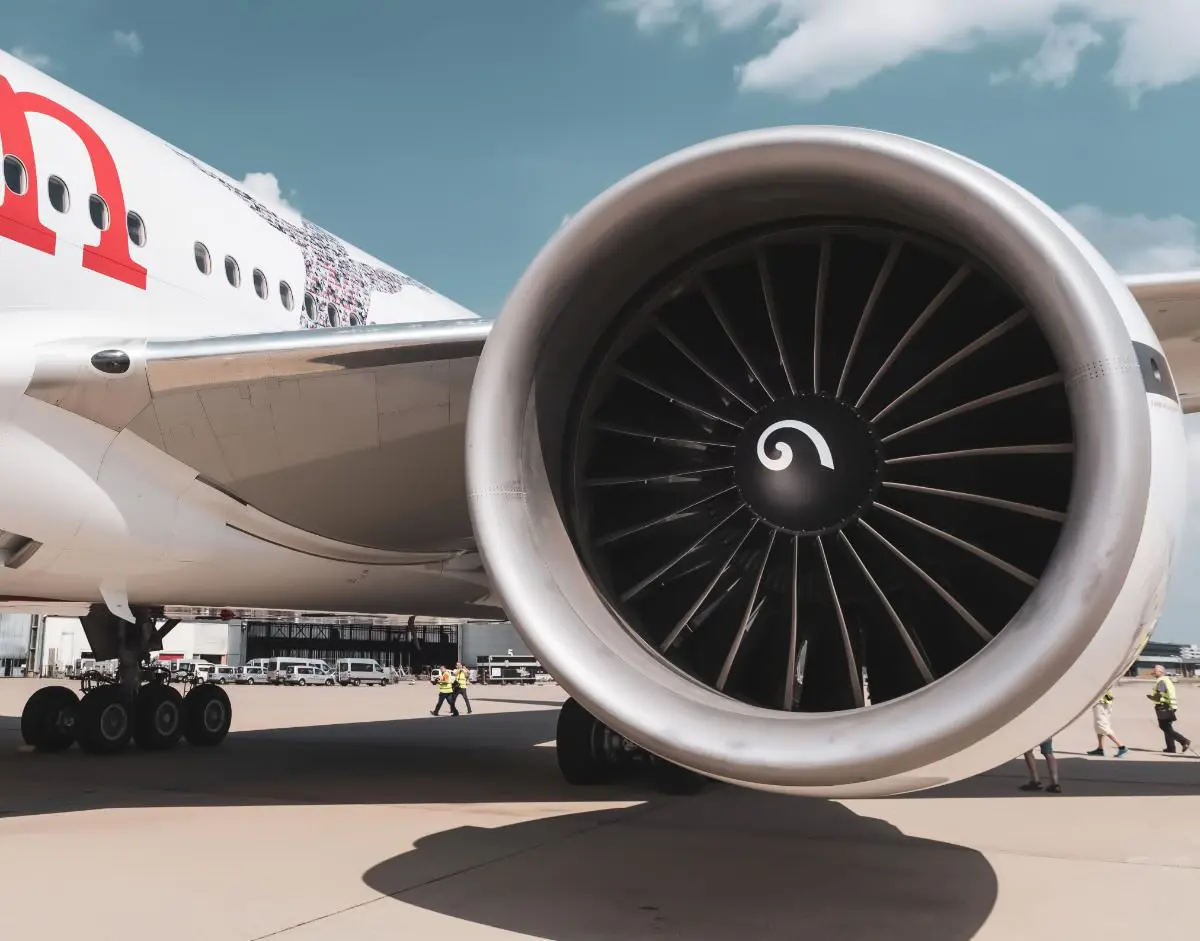
For comparison, the high-pressure compressor and turbine will run at more than 10.000 RPM.
Large diameter fans generally spin at lower speeds than smaller diameter fans. In addition, large engine fans typically move more air which is an excellent advantage as it improves efficiency.
Generally, the larger the diameter, the lower the fan spins. In other words, fans on larger engines spin slower than their smaller siblings. The fan's job is to produce a high amount of thrust to propel the aircraft forward. For that job, they need to run fast, but not too fast. The tip of the blades should not exceed the speed of sound. Otherwise, the airflow becomes too unstable and ineffective. Therefore, a large diameter fan has to rotate slower than a small one to stay under the speed of sound.
Examples of Jet Engine RPM
| Engine Model | RPM | Application |
| General Electric GE90 | 2261 / 2355 RPM* | Boeing 777 |
| General Electric GE9X | 2355 RPM | Boeing 777X |
| General Electric GEnx | 2560 / 2835 RPM* | Boeing 787 Dreamliner and 747-8 |
| Rolls-Royce Trent 1000 | 2683 RPM | Boeing 787 Dreamliner |
| Rolls-Royce Trent 7000 | 2683 RPM | Airbus A330neo |
| Rolls-Royce Trent XWB | 2700 RPM | Airbus A350 |
| Rolls-Royce RB211 | 3900 / 4500 RPM* | Boeing 747-400, 757, and 767 |
* depending on variant.
Is the Jet Engine RPM Shown in the Cockpit?
As described above, not all parts of the engine rotate at the same speed. However, the flight crew needs to monitor the engine rotation speeds. For that purpose, the engine parts are grouped into what spins at the same rates. These groups are called N1 and N2.
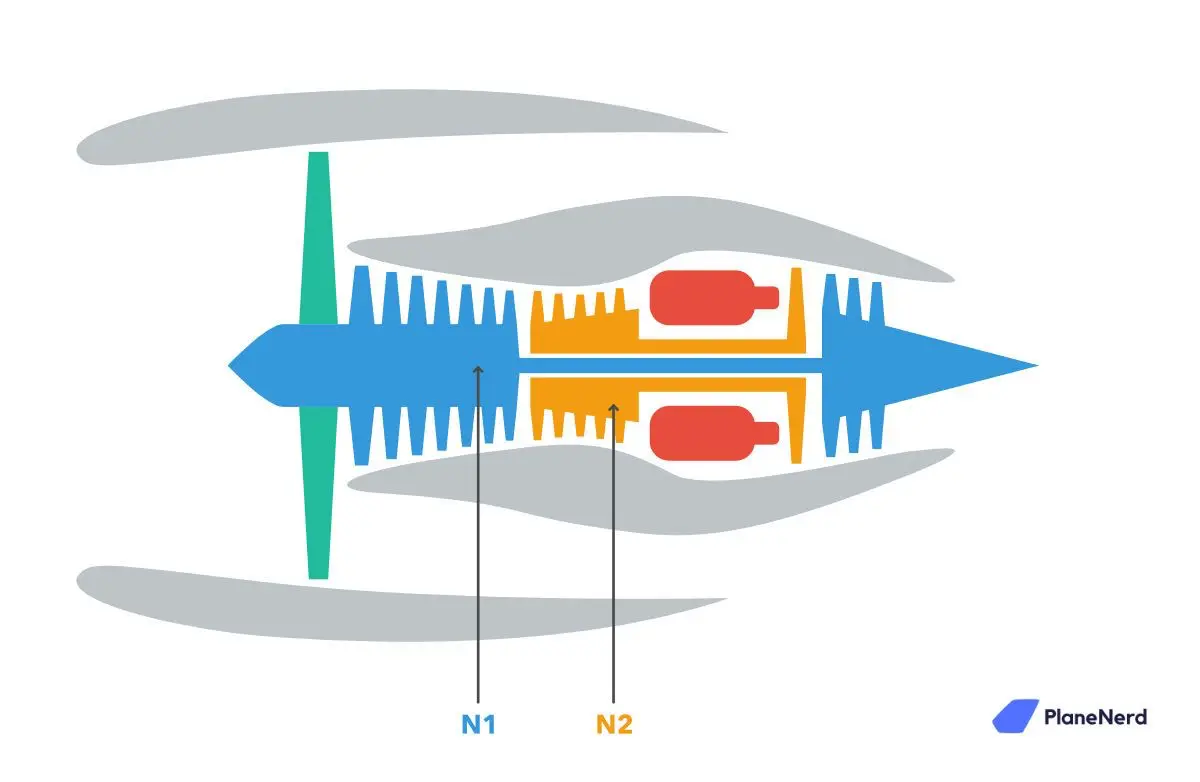
The N1 is the rotation speed of the first part of the compressor and the rear part of the turbine. The N1 is expressed as a percentage of the maximum allowed rotation speed. The N2 group is the rotation speed of the end part of the compressor and the forward part of the turbine. N2 is also expressed as a percentage of the max RPM allowed.
The engine displays in the cockpit show both the N1 and N2 values to the pilots. These values are essential for flying the aircraft safely.
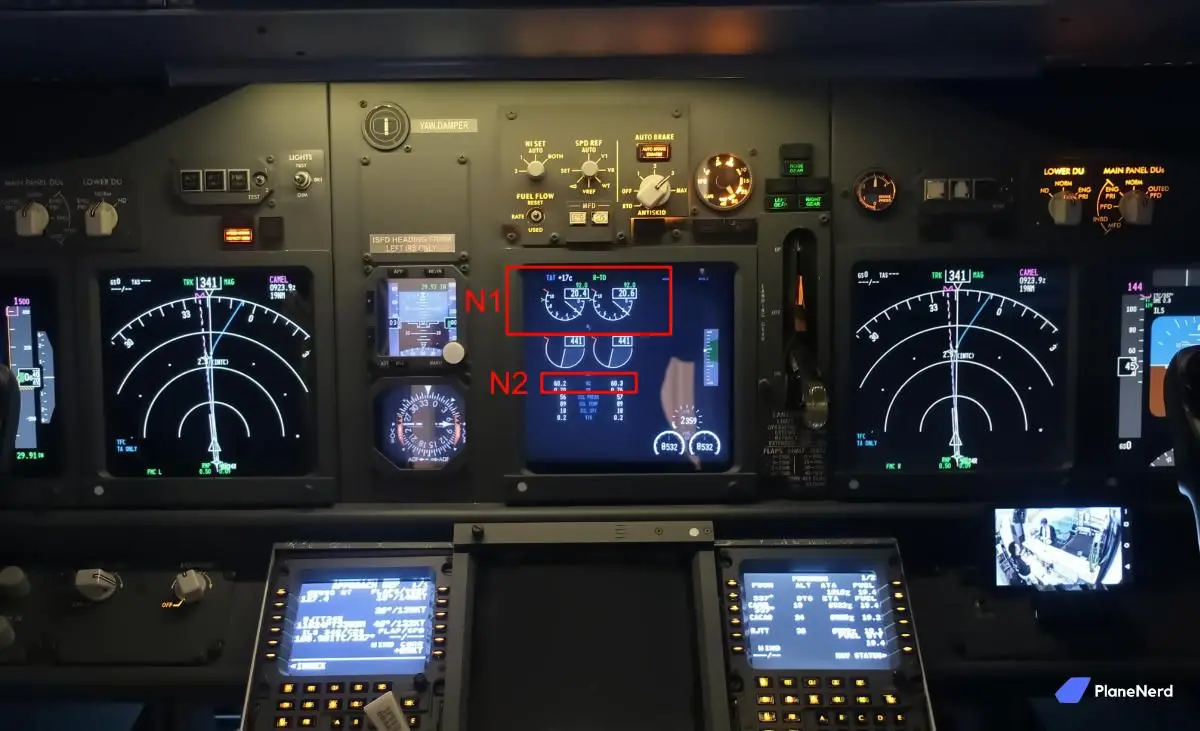
N1 indicates the "health" of the engine's air intake and compressor stages. More directly, N1 indicates how much air the engines take in overall.
The N2 value indicates how much power the engine-driven systems are getting. Systems like hydraulic pumps, fuel pumps, and generators are getting their power from the N2 stages of the engine.
Conclusion
A jet engine is a complex machine. Its many parts work together to create pressure and propulsion for the aircraft.
It opened the world for both faster and longer travel, without fuel stops. Rising efficiency meant declining costs, and more people could afford airline tickets.
Jet engines fascinate us because of their size, power, and importance to aviation. When at an airport, it is easy to wonder:
How Many RPM Does a Jet Engine Spin
The short answer is that the front fan on large modern airliners runs between 2500 and 4000 RPM. And because of the way a jet engine works, some parts of the engine spins even faster.
Planenerd Newsletter
Join the newsletter to receive the latest updates in your inbox.

